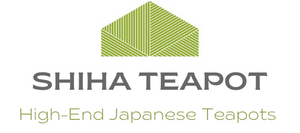

Exquisite and intricately crafted small Japanese lacquer incense container, created by a renowned maki-e artist representing Japan.
This exquisite Maki-e case, traditionally used as an incense case in the Japanese tea ceremony, is a stunning reflection of the harmony and beauty that are essential to Japanese tea culture.
Crafted with exceptional skill, the item remains in excellent condition, either unused or barely used. The landscape art, combined with the silver rim, evokes a deep and dignified sense of tradition, beautifully representing the solemnity and richness of Japan's cultural heritage.
Made several decades ago by Hakose Junichi, one of Japan's top Maki-e artists, this piece embodies his unparalleled artistry. Over the years, Hakose Junichi has collaborated with prestigious global brands such as Chanel, Christofle, and Van Cleef & Arpels. His exceptional craftsmanship has contributed to the beauty of these brands' watch, cutlery, and jewelry.
Decades ago, Hakose Junichi concentrated his techniques in tea utensils such as Matcha caddies (Natsume) and incense container , and this incense container represents a precious example of his work from the time. Today, his artistry has evolved, expanding into new realms and producing groundbreaking pieces. This incense container is a rare and valuable work.
This piece seamlessly combines elegance and sophistication, radiating a refined and noble aura, reflecting the same level of refinement found in those designated as Important Cultural Properties of Japan.
Status: Available (please contact us)
What is Wajima lacquer (Wajima-nuri)?
Wajima lacquer (Wajima-nuri) is one of Japan's renowned lacquerware traditions, produced in Wajima City, Ishikawa Prefecture, where skilled artisans gather. Notable for its decorative techniques such as maki-e and the use of gold leaf, Wajima lacquer is celebrated for its beauty and craftsmanship.
Wajima lacquer is highly regarded for its superior quality and artistic value, particularly in tea utensils and craft items. It is considered one of the finest examples of traditional Japanese lacquerware. However, many workshops were severely damaged by the earthquake and flooding in 2024, which has had a significant impact on lacquerware production.
What is Maki-e?
蒔絵 (maki-e) is a traditional Japanese lacquerware decoration technique. The term translates to "sprinkled picture," as the process involves sprinkling fine metallic powders, such as gold or silver, onto wet lacquer to create intricate designs. Once the lacquer hardens, additional layers are applied, polished, and sometimes combined with inlays of shell, ivory, or other materials.
Maki-e is known for its elegance and detail, often depicting natural motifs like landscapes, flowers, or animals. This art form has been practiced for centuries and is highly regarded for its craftsmanship and beauty, symbolizing Japanese cultural and artistic heritage.


